Savanna Agardy, Utah SHPO Compliance Archaeologist
World heritage is defined as cultural or natural heritage that has outstanding universal value. Universal value in heritage essentially means that world heritage belongs to everyone, as it is international in nature and citizens of the world have a right to learn from and access it. World or universal heritage is generally defined by heritage sites that are placed on the United Nations Educational, Scientific, and Cultural Organization’s (UNESCO) List of World Heritage Sites. Currently, there are no UNESCO World Heritage Sites in Utah, and there are only 11 cultural heritage sites and 12 natural heritage sites in the USA as a whole [1]. However, this does not mean that Utah’s heritage is not universal, as Utah’s heritage is outstanding in significance and value, warranting international recognition and protection.
Highlighting in the UNESCO fashion of the cultural and natural heritage categories, five heritage sites Utah are featured here that are universal in nature – 3 cultural and 2 natural heritage sites. While many of these sites have seen national recognition with National parks or monuments designations, they also deserve international classification, as they are truly unique and outstanding in value.
The Bears Ears Area

The Bears Ears area contains incredible tangible and intangible components that contribute to Utah’s universal heritage. On the tangible side, Bears Ears contains thousands of archaeological sites dating anywhere from the Paleoindian period to the Historic period, a date range from about 12,000 – 50 years ago [2]. A majority of the archaeological sites in the area, however, date to the Ancestral Puebloan (Anasazi) period where populations thrived in the canyon country environment around 700 years ago [2]. It has been said that the Bears Ears area arguably contains the highest density of archaeological sites in the world, and there are at least 100,000 known sites in the area [2].
Along with the tangible archaeological components of Bears Ears, the area also holds intangible components, as it is sacred to many Native American Tribes who still use the area for traditional and ceremonial uses, such as connecting with ancestors, collecting herbs and medicine, foraging for food, hunting game, and collecting firewood for ceremonial use [2]. While many tribes that currently reside in the Four Corners Area may lay claim to the ancestral heritage of Bears Ears, five tribes have recently come together as the Bears Ears Inter-Tribal Coalition to represent the sacred and tribal interests of the area: the Navajo Nation, Hopi Tribe, Ute Mountain Ute, Zuni Tribe, and Ute Indian Tribe [3].
“The Coalition represents a historic consortium of sovereign tribal nations united in the effort on multiple fronts to work collaboratively to protect and promote sacred, spiritual, historical, natural, scientific and cultural resources on lands within the Bears Ears landscape.”
Bears Ears Inter-Tribal Coalition [3]

It is also worth mentioning that the Bears Ears are does contain recreational value in natural heritage. Residents of Utah, as well as tourists from around the world, travel to the Bears Ears area to camp, hike, backpack, bike, and climb. The recreational value along with the bigger cultural values demonstrate the universal significance of Bears Ears.
Nine Mile Canyon
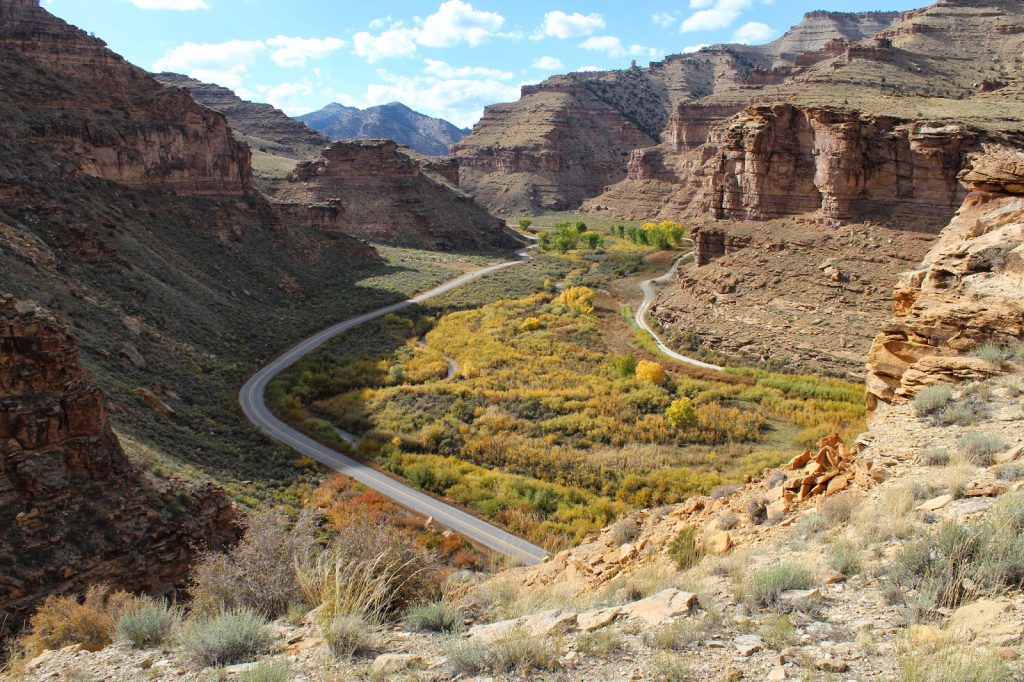
Located east of Price, Utah on BLM land, Nine Mile Canyon represents one of the richest areas in archaeology, specifically rock imagery, in the country. The canyon once thrived with prehistoric people in the Fremont & Ute periods, leaving over 1,000 archaeological sites that are both scientifically important and sacred to affiliated Native American Tribes today [4]. The canyon was also an important travel corridor in the 1880’s for historic peoples who created historical archaeological sites, leaving the canyon as an important archaeological palimpsest [4].
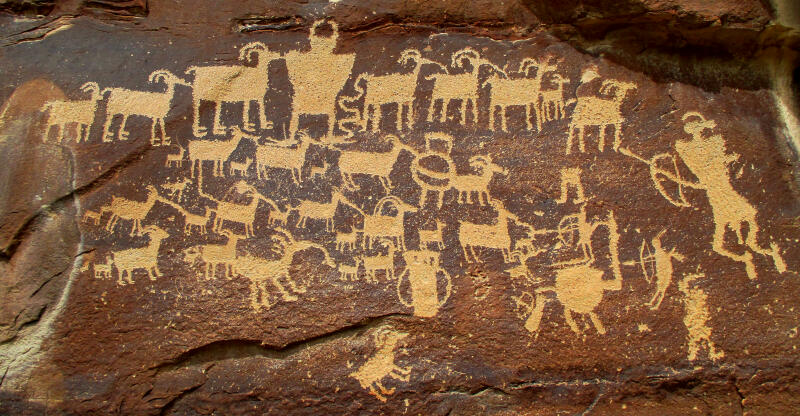
Arguably the most famous rock imagery site in the country is the Great Hunt Panel in Nine Mile Canyon. Images of this rock imagery site can be seen all around the world, exhibiting the international reach of Nine Mile Canyon. The panel certainly exhibits a masterpiece human creative genius – the first criteria of significance under the UNESCO World Heritage Sites List [5].
Nine Mile Canyon represents a culturally and scientifically important population center of Utah’s prehistoric inhabitants and has been deemed “the world’s longest art gallery” – certainly holding universal significance [4].
Promontory Summit/Golden Spike National Historical Park
On May 10th, 1869, the First Transcontinental Railroad from Omaha to Sacramento was completed – and the meeting point was in Promontory, Utah [6]. Two companies – the Union Pacific and Central Pacific – agreed upon the Utah meeting spot and held the Golden Spike Ceremony to commemorate the railroad’s completion. The Union Pacific’s No. 119 and the Central Pacific’s Jupiter came head to head for the famous picture of the Golden Spike Ceremony [6], an event that is not only locally, but also nationally and internationally significant, representing the unification of the contiguous United States.
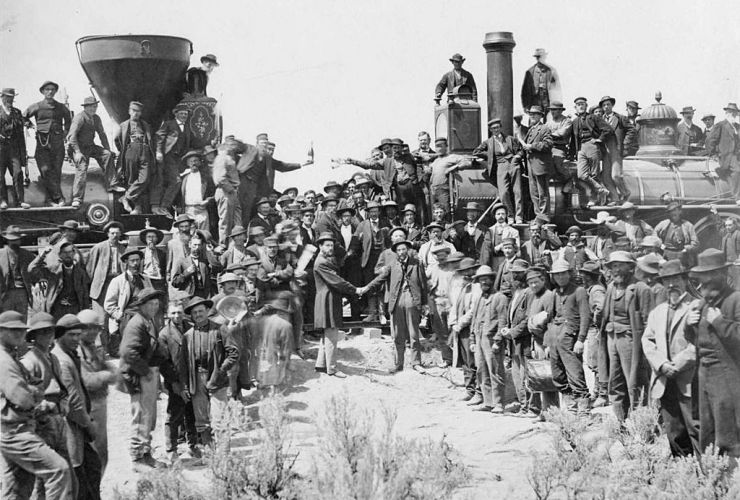
The completion of First Transcontinental Railroad exhibits an outstanding technological development as well as cultural phenomena, as labor crews were primarily Irish and Chinese immigrants [6], laying a framework for a portion of the US demographic today.
On May 10, 2019, Utah celebrated the 150th anniversary of the railroad’s competition in multiple Spike 150 events, culminating in a large ceremony at Golden Spike National Historical Park where the Golden Spike Ceremony’s famous photo was recreated.
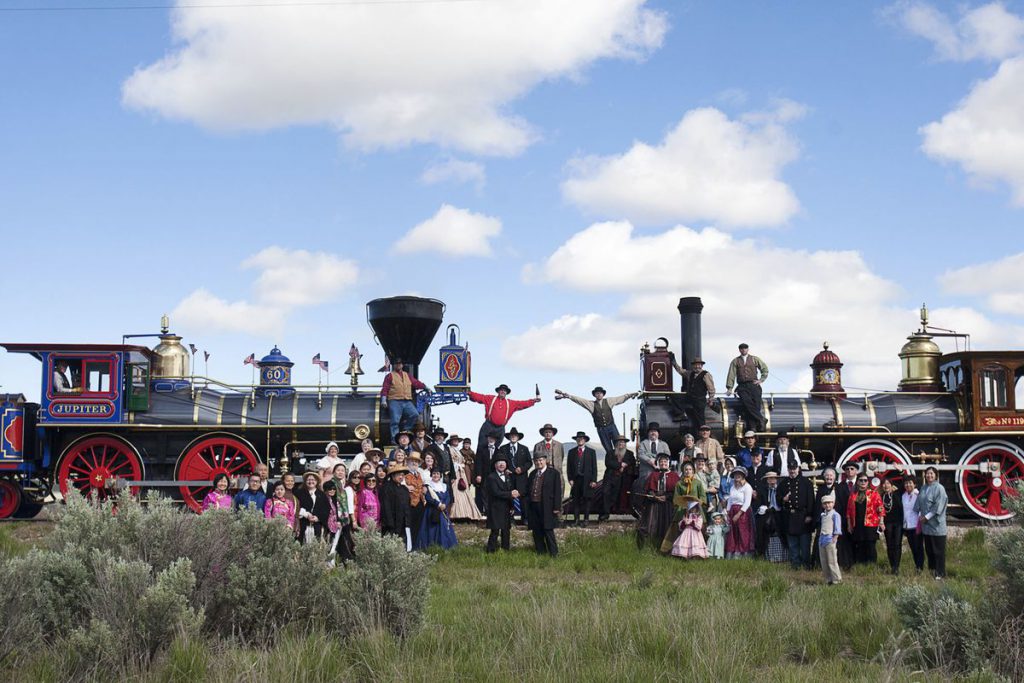
Home to the historic meeting of the First Transcontinental Railroad, Utah is exceedingly proud to be the stewards of this universally significant heritage.
Cleveland-Lloyd Dinosaur Quarry/Jurassic National Monument
The geologic Morrison Formation is world famous for preserving paleontological assemblages – mainly dinosaur fossils. The Cleveland-Lloyd Dinosaur Quarry, recently designated as Jurassic National Monument managed by the BLM, is home to the highest density of Jurassic era dinosaur fossils ever found [7]. Located in central Utah, over 12,000 dinosaur fossils have been excavated to date with thousands more remaining in the ground [7]. The majority of the fossils come from the Allosaurus fragilis, a carnivorous theropod dinosaur that lived around 150 million years ago [7, 8].
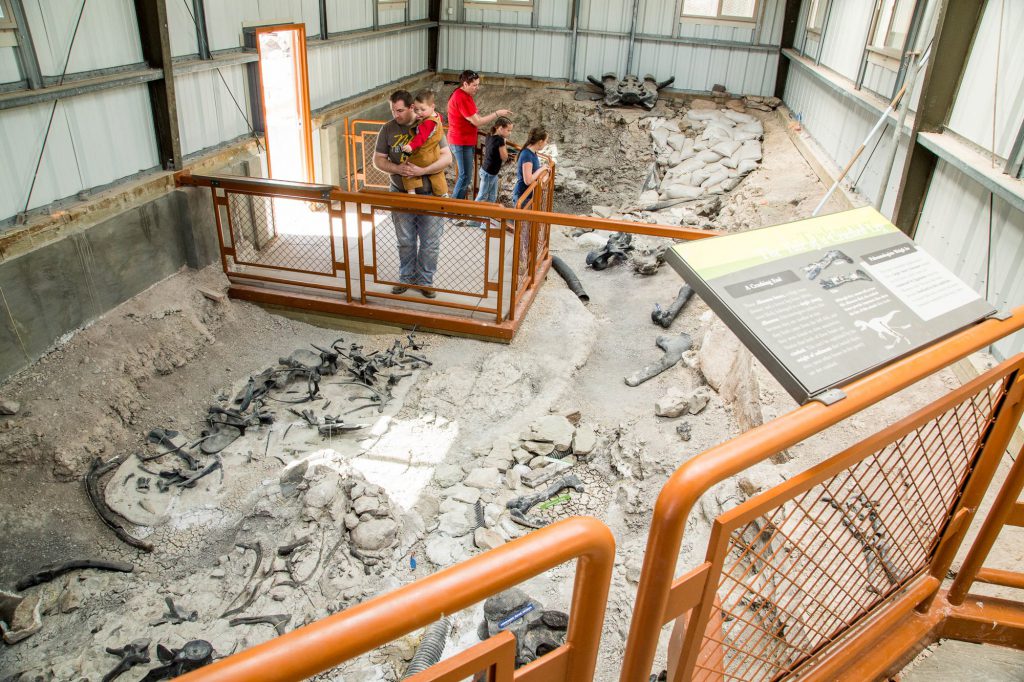
The quarry is theorized to be a predator trap, as bones from numerous dinosaurs species are mixed together [8]. The jury is still out on how exactly these dinosaurs died and why they are so well preserved, but paleontological work at the site will hopefully solve the mystery of one of the world’s most important paleontology sites.

The universal significance of the Cleveland-Lloyd Dinosaur Quarry/Jurassic National Monument is undisputed, monumentally contributing to our understanding of the Earth history and the Jurassic age of dinosaurs.
Grand Staircase-Escalante National Monument
If there is one area in Utah that contains both natural and cultural, tangible and intangible heritage, it is Grand Staircase-Escalante National Monument. Covering over a million acres of BLM land in Southern Utah, Grand Staircase has something for just about everyone – archaeology, paleontology, recreation, biology, geology, history – the list goes on [9].
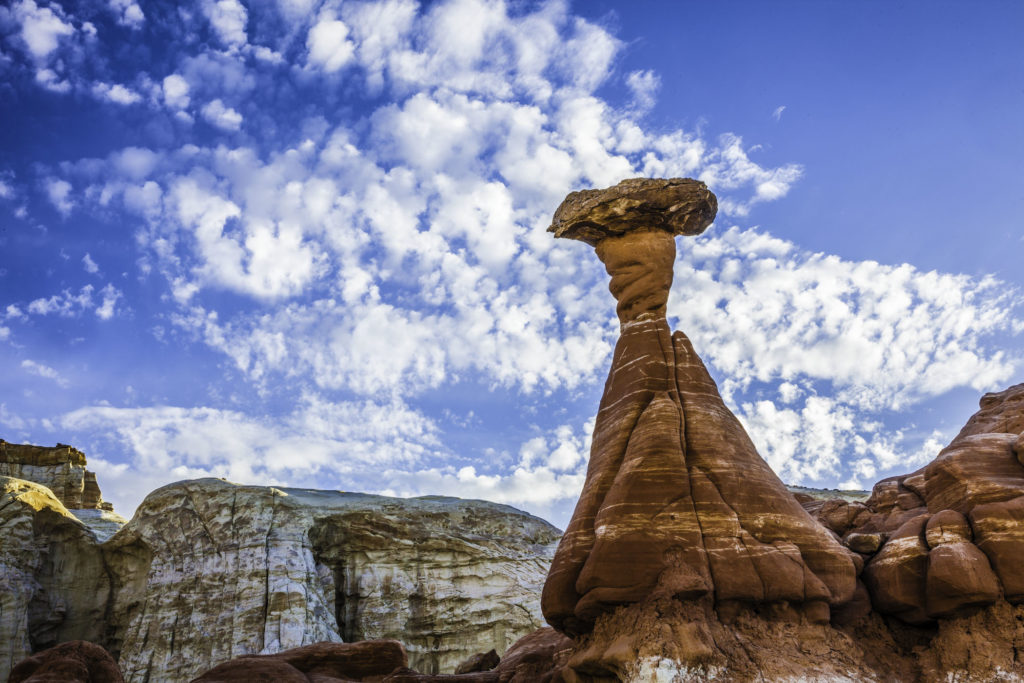
The formations of cliffs, terraces, and plateaus resemble a type of natural staircase, which is where the monument gains it’s name from. In addition to cliffs and terraces, the monument contains arches, hoodoos, toadstools, slot canyons, and natural bridges, which all culminate in an amazing geologic landscape found nowhere else in the world [9]. Biologically, the monument covers five life zones, and is also home to thousands of dinosaur fossils where several new species have been discovered [9].
More recently in history, a significant amount of archaeological sites are present in the monument from the Anasazi and Fremont periods that are sacred to modern-day tribes [9]. Modern people also use the area recreationally to hike, camp, bike, and climb.
“This unspoiled natural area remains a frontier with countless opportunities for quiet recreation and solitude.”
Bureau of Land Management – Utah [9]
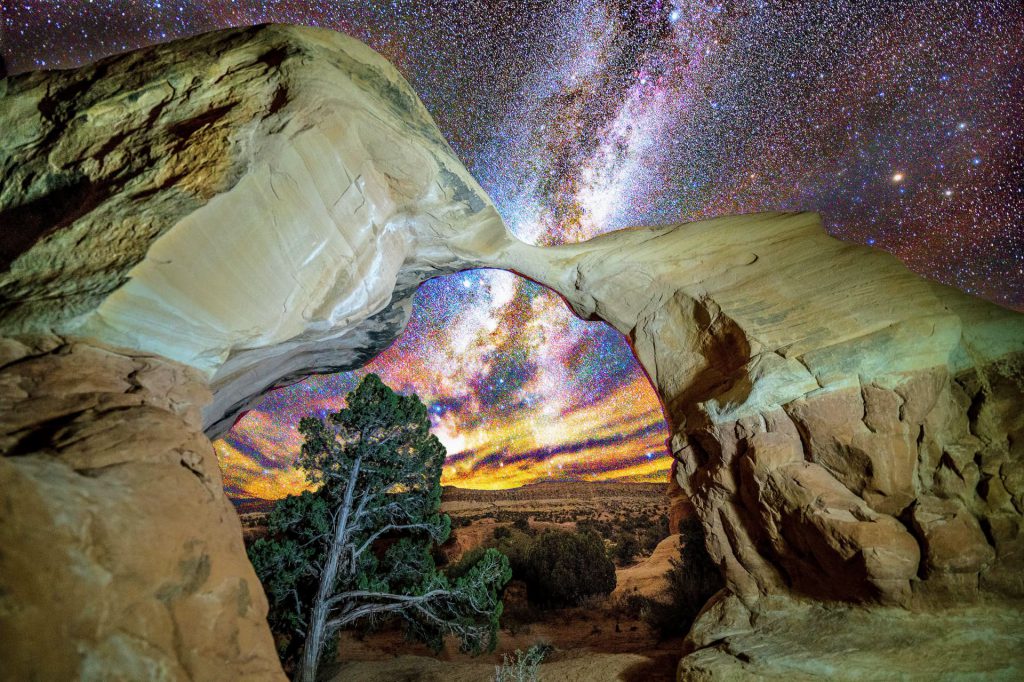
Completely unique in value and significance, Grand Staircase-Escalante National Monument is the perfect example of Utah’s universal heritage, worthy of international recognition and protection.
So – Utah’s Heritage is Universal
These five examples meet many of the significance criteria for universal heritage for inscription on the UNESCO World Heritage Sites List:
UNESCO Criterion i: “Representing a masterpiece of human creative genius” [5] Nine Mile Canyon, Bears Ears
UNESCO Criterion iii: “Bearing a unique or at least exceptional testimony to a cultural tradition or to a civilization which is living or which has disappeared” [5] Bears Ears, Nine Mile Canyon, Grand Staircase-Escalante National Monument
UNESCO Criterion iv: “Representing an outstanding example of a type of building, architectural or technological ensemble or landscape which illustrates significant stage(s) in human history” [5] Golden Spike National Historical Park/First Transcontinental Railroad
UNESCO Criterion v: “Outstanding example of a traditional human settlement, land-use, or sea-use which is representative of a culture (or cultures), or human interaction with the environment especially when it has become vulnerable under the impact of irreversible change” [5] Bears Ears
UNESCO Criterion viii: “Outstanding examples representing major stages of earth’s history, including the record of life, significant on-going geological processes in the development of landforms, or significant geomorphic or physiographic features” [5] Cleveland-Lloyd Dinosaur Quarry/Jurassic National Monument & Grand Staircase-Escalante National Monument
UNESCO Criterion x: “To contain the most important and significant natural habitats for in-situ conservation of biological diversity, including those containing threatened species of outstanding universal value from the point of view of science or conservation” [5] Grand Staircase-Escalante National Monument
These five examples of Utah’s universal heritage do not encompass all that Utah has to offer. There are many other valuable and significant places in our great state, only highlighting our rich and vibrant heritage. Utah’s distinct heritage carries many universal aspects and one day may receive international recognition through the UNESCO World Heritage Sites List.
⸻⸻⸻
[1] https://whc.unesco.org/en/statesparties/us [2] https://bearsearscoalition.org/ancestral-and-modern-day-land-users/ [3] https://bearsearscoalition.org/ancestral-and-modern-day-land-users/ [4] https://en.wikipedia.org/wiki/Ninemile_Canyon_(Utah) [5] https://whc.unesco.org/en/statesparties/us [6] https://en.wikipedia.org/wiki/Promontory,_Utah [7] https://www.blm.gov/national-conservation-lands/utah/jurassic-national-monument [8] https://nhmu.utah.edu/allosaurus-fragilis [9] https://www.blm.gov/programs/national-conservation-lands/utah/grand-staircase-escalante-national-monument